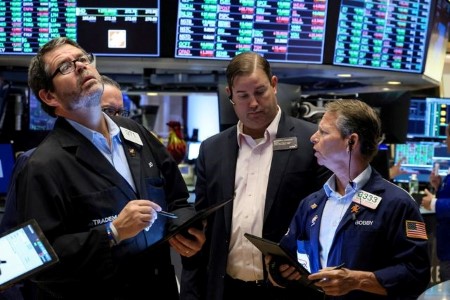




Inflation Update: Green light for easing
 DOWNLOAD
DOWNLOAD

December Economic Update: One for them, one for us
 DOWNLOAD
DOWNLOAD

Philippines Trade Update: Trade trajectories trend along
 DOWNLOAD
DOWNLOAD


S&P 500 falls to two-year low, bear market rally snuffed out

Sept 27 (Reuters) – The S&P 500 fell to its lowest level in almost two years on Tuesday on worries about super aggressive Federal Reserve policy tightening, trading under its June trough and leaving investors appraising how much further stocks would have to fall before stabilizing.
Stocks have been under pressure since late August after comments and aggressive actions by the U.S. Federal Reserve signaled the central bank’s top priority is to stamp out high inflation even at the risk of putting the economy into a recession.
The S&P 500 touched a session low of 3,623.29, its lowest point on an intraday basis since Nov. 30, 2020. A late rally helped push the index off its worst level of the day, but the index still closed lower for a sixth straight session as it lost 7.75 points, or 0.21%, to 3,647.29 .
After the benchmark index fell more than 20% from its early January high to a low on June 16, which confirmed that the retreat was indeed a bear market, the S&P then rallied into mid-August before running out of gas.
That bear-market rally is now over.
“As long as the Fed continues to raise rates, and investors don’t anticipate an end of the rate hikes, I think this market is going to continue to be weak,” said Tim Ghriskey, Senior Portfolio Strategist, Ingalls & Snyder, New York.
The big blow for the index that re-ignited selling pressure was Fed Chair Jerome Powell’s speech at Jackson Hole that confirmed the Fed’s resolve to fight inflation, followed by a third straight 75 basis point interest rate hike by the central bank last week. The index has tumbled more than 12% since Powell’s speech and has shown little signs of stabilizing.
Many analysts had looked at 3,900 as a strong technical support level for the index. That gave way 11 days ago under four straight days of selling.
“When you have these cascades of selling like we’ve seen since the Fed, really, support doesn’t really matter, you can slice right through it,” said Ryan Detrick, chief market strategist at Carson Group in Omaha, Nebraska.
“Fundamentals and logic are almost thrown out the window because we are all wondering just how hawkish is the Fed, and then you look around this week and all these central banks around the globe hiked rates.” Detrick said that coordinated hikes by multiple central banks left investors wondering how hawkish they all will end up being.
Robert Pavlik, Senior Portfolio Manager at Dakota Wealth in Fairfield, Connecticut said he is looking at a worst case of 3,000 for the S&P as a support level.
“People are concerned about the Federal Reserve, the direction of interest rates, the health of the economy, and also the next couple of weeks with earnings season coming up and companies reporting lower-than-expected earnings.”
Analysts are still looking for signposts of investor capitulation that can show selling pressure is exhausted. But sell-offs this year have not contained all those ingredients — a sharp drop in prices, a day of unusually high volume and a jump in the CBOE Volatility index to 40 or above. So, many investors to conclude that selling has yet to be depleted.
“It goes down, you get some decent volume but you don’t necessarily have the classic signs of capitulation,” said Brian Jacobsen, senior investment strategist at Allspring Global Investments in Menomonee Falls, Wisconsin.
“Maybe enough has changed over the years that some of those indicators aren’t going to be a very good guide for the future.”
That leaves investors looking for the next catalyst to help markets stabilize, or get cheap enough for to start buying again, such as signs the Fed’s actions may be starting to tame inflation, a weakening of the labor market, and what the upcoming corporate earnings season may bring about.
“On (October 7), you get the employment situation report and the following week you get the inflation report so we will be on pins and needles waiting to see what those numbers say, and then you have earnings,” said Jacobsen.
(Reporting by Chuck Mikolajczak; additional reporting by Noel Randewich and Ankika Biswas; Editing by Alden Bentley, Franklin Paul, Nick Zieminski, Chizu Nomiyama and David Gregorio)
This article originally appeared on reuters.com





 By Reuters
By Reuters